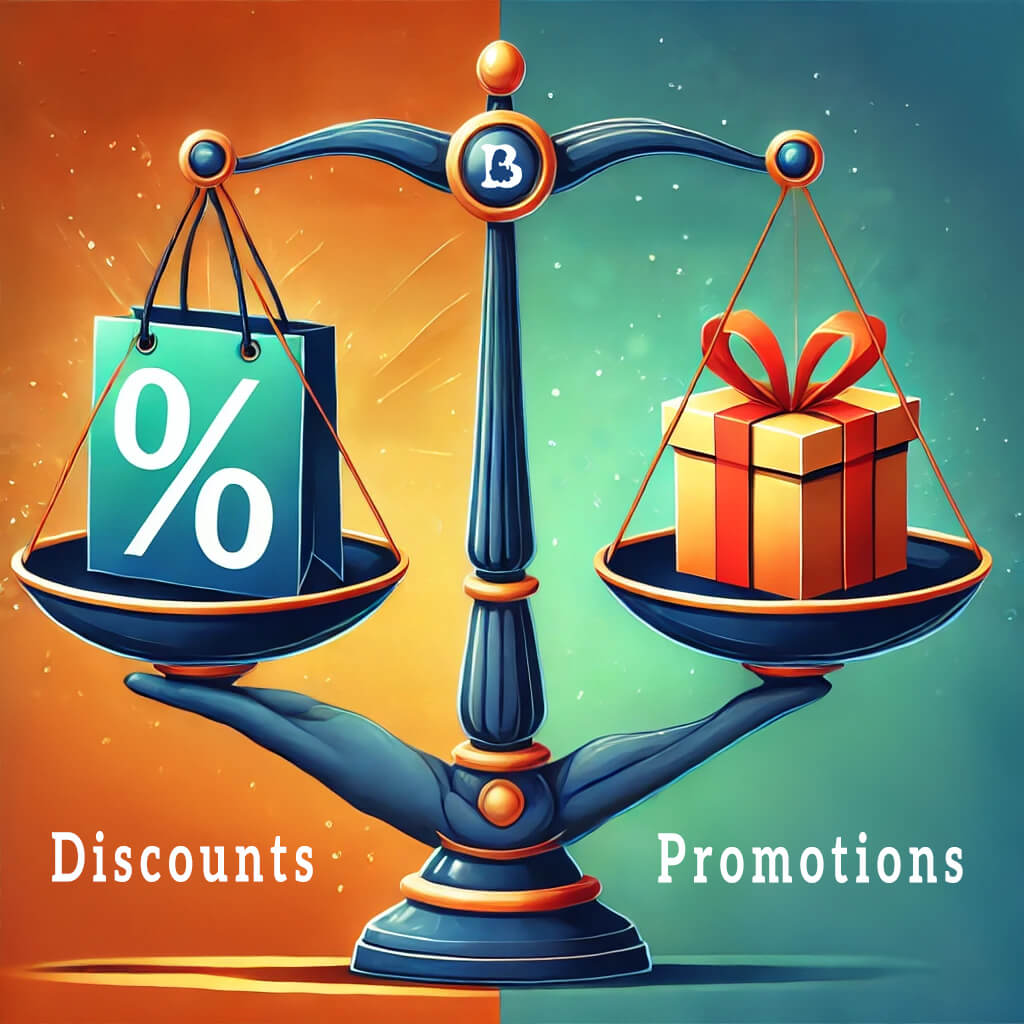Discounts and Promotions: Key Differences, Benefits, and Risks

We all look forward to discounts, promotions, and great opportunities to purchase products or services at a bargain. No business niche stays untouched by the global day of sales and discounts, more widely known as Black Friday.
Of course, it’s always exciting to please your loyal customers or attract new ones, but it’s also essential to understand the difference between discounts and promotions, recognize their pros and cons, and integrate these insights into your marketing strategy effectively.
Let’s dive into the main nuances and features.
What Is a Discount?
A discount is a price reduction on a product or service relative to its standard price. Discounts are offered to stimulate purchases, boost sales, or attract customers.
Main Goals of Discounts:
- Attracting new customers.
- Stimulating the purchase of specific products or services.
- Clearing out old collections or stock.
- Enhancing the loyalty of existing customers.
Examples of Discounts:
- Percentage Discount: 20% off all products.
- Fixed Discount: $20, €20, or CHF 20 off a purchase.
- Bulk Discount: 10% off when purchasing 3 or more items.
- Seasonal Discount: Up to 50% off on winter collections.
What Is a Promotion?
A promotion is a marketing event aimed at driving product or service sales. Promotions can include discounts, gifts, bonuses, and other incentives for customers.
Main Goals of Promotions:
- Boosting sales by generating interest in a product or service.
- Drawing attention to a brand or new arrivals.
- Building a positive image for the company.
- Encouraging repeat purchases.
Examples of Promotions:
- “Buy 2, Get 1 Free”: Purchase two items and get the third one for free.
- Prize Draws: Participate in a giveaway when you make a purchase.
- Cashback: Get a partial refund on your purchase.
- Seasonal Promotion: Summer sale.
- Gifts: Receive a free accessory when buying a smartphone.
Key Differences Between Discounts and Promotions
| Criterion | Discount | Promotion |
| Objective | Reducing the price | Creating additional value |
| Form | Price reduction (percentage or fixed) | Varied forms: discounts, gifts, bonuses, contests |
| Impact | Immediate price reduction | Often long-term effects on customer loyalty |
| Scope | Limited to specific items/services | Can include multiple products or categories |
Discounts and promotions are powerful marketing tools aimed at increasing sales and attracting customers. Discounts directly affect the price, while promotions create additional incentives for making a purchase. Their combination enables companies to achieve their goals more effectively.
The Cons of Discounts and Promotions
While discounts and promotions can be powerful tools to stimulate sales, they also have drawbacks.
Drawbacks:
Reduced Profit Margins:
- Discounts lower profit margins, especially when products already have minimal markup.
- Regular discounts create customer expectations of lower prices, making full-price sales difficult.
Brand Perception Issues:
- Frequent and large discounts may lead customers to perceive the brand as “cheap.”
- Overuse of promotions can dilute the brand’s uniqueness.
Attracting Non-Target Audiences:
- Promotions may attract “bargain hunters” who don’t become loyal customers.
- One-time buyers may not return if discounts are unavailable.
Market Behavior Impact:
- Frequent promotions can spark price wars with competitors, harming the market as a whole.
- Over-discounting may devalue the product and upset market balance.
Operational Challenges:
- High-volume promotions can strain logistics, inventory, and staff.
- Stock shortages during promotions can lead to customer dissatisfaction.
- Pricing errors during promotions can result in losses.
Customer Loyalty Concerns:
- Offering discounts only to new customers may upset loyal clients.
- Regular customers might begin expecting discounts on all purchases.
Potential Misuse:
- Fraud or abuse of promotions, such as manipulations with returns or promo codes.
- Poor tracking systems may result in losing control over campaign efficiency.
Ineffectiveness with Poor Strategy:
- Offering discounts on low-demand items may not yield results.
- High advertising costs for ineffective campaigns can lead to losses.
Tips to Minimize Risks:
- Plan Promotions Carefully: Analyze the sales volume needed to offset price reductions.
- Limit Discount Frequency: Use promotions sparingly to preserve product value.
- Segment Your Customers: Create personalized offers for different audience segments.
- Measure Effectiveness: Regularly analyze promotion results to assess their impact.
Discounts and promotions can be effective tools, but Beautier recommends using them thoughtfully to avoid long-term negative consequences.